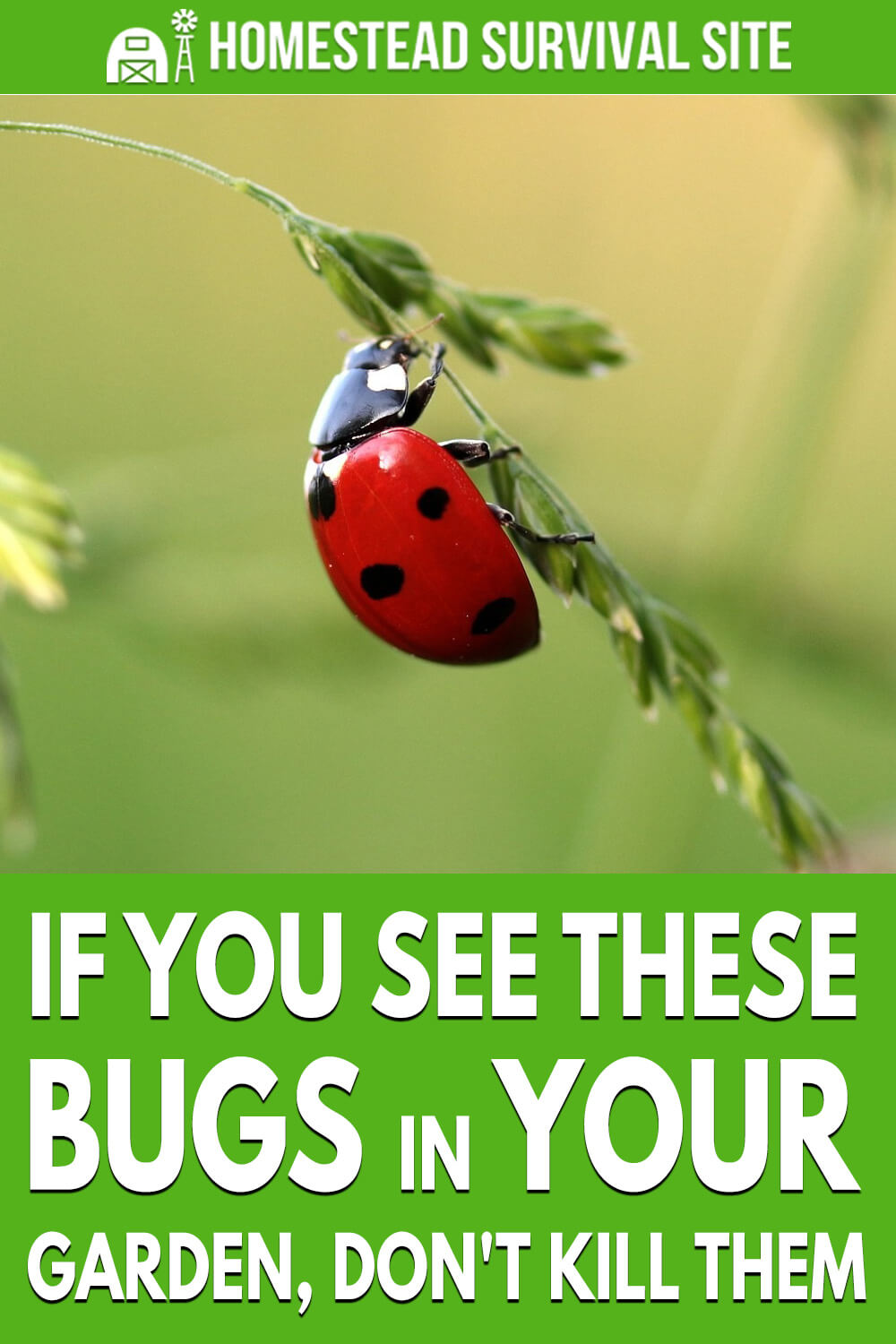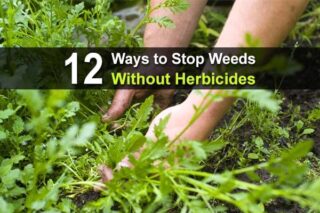Estimated reading time: 8 minutes
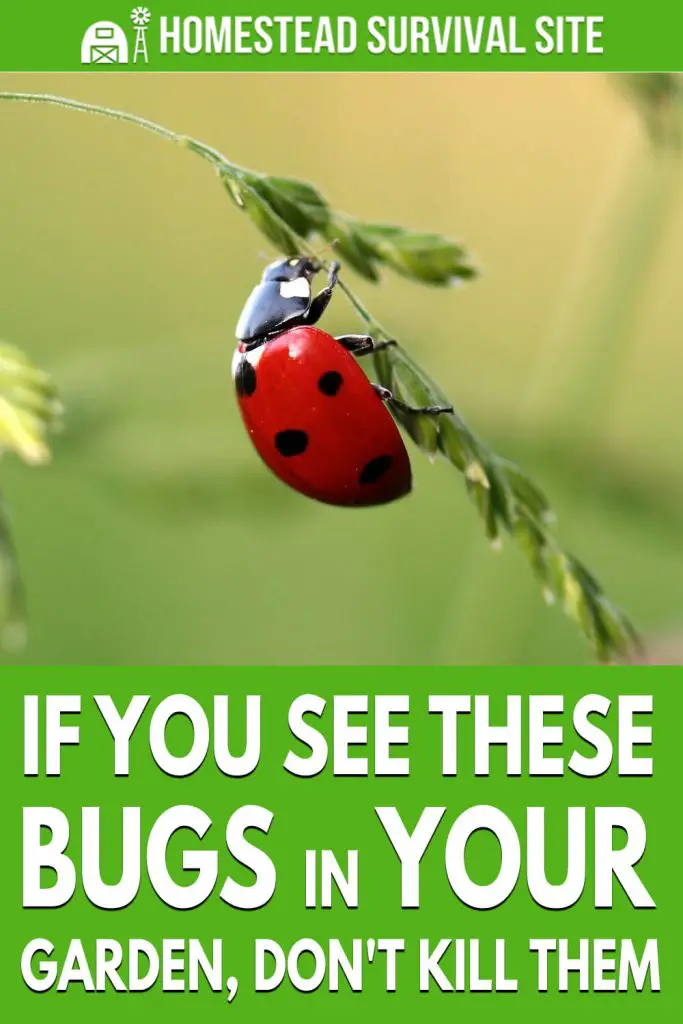
When most of us see a bug, we want to either kill it immediately or get as far away from it as possible. Homesteaders know a thing or two about bugs, and how they can quickly ruin your time outdoors. Mosquitoes are a nuisance, and some insects can cause serious harm with a single bite.
However, there are plenty of bugs that you want to have around, especially in your garden. Some look cute while others are scary looking, but they all can greatly benefit your plants. That isn’t to say that these bugs can’t defend themselves when prodded, though.
Want to save this post for later? Click Here to Pin It On Pinterest!
So if you find yourself working in the garden and a bug crawls over your hand, don't squash it! First, ask yourself what type of bug it is and whether it's good or bad for your garden. To help you out, check out this list of beneficial bugs.
Bees
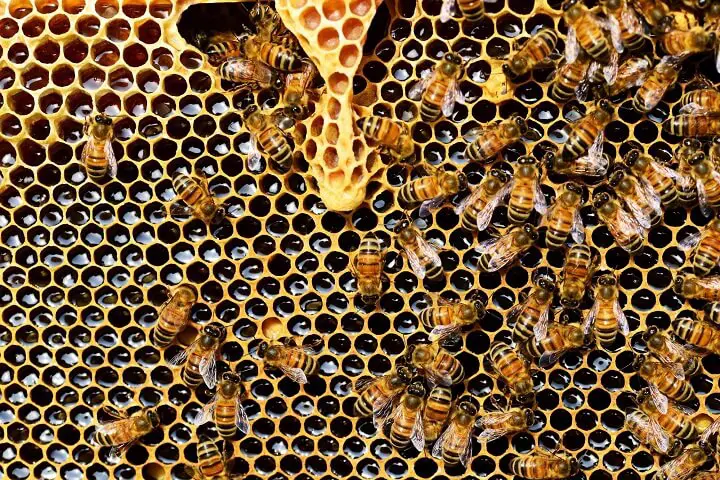
Known as the world’s best pollinators, bees have always had their place in the cycle of gardening and farming. You’ve probably heard of the recent rapid decline in bees that has become a worldwide crisis. Bees are incredibly valuable in their ability to cross-pollinate from flower to flower, making them vital to food crops.
There are different variations of bees that are important to know when working on the homestead. Bumble Bees, also known as Big Bees, are those hairy black-and-yellow striped bees that you can usually hear as they fly.
They may look scary, but they are essential, so leave them alone and let them do their work. If prodded, bees will sting to defend themselves which can cause allergic and possibly life-threatening reactions in some people.
Honeybees are are the cream of the crop when it comes to pollination. Honeybees not only pollinate local flowers and plants, but they also make honey that can be harvested. You’ll know a honeybee by their narrow bodies and smaller stripes compared to Bumble Bees.
Cultivating your own hive on the homestead is a critical way to support honeybees while also inviting them to your farm. Hives can be tricky to keep alive in cold climates, though.
Attract bees to your homestead by planting borage, Agastache, Mexican Heather, African Blue Basil, and any other pollinator plants that offer blooms. Fruit trees, vegetables, and berries are key for homestead gardens and will see a lot of bee action throughout the growing season.
For more information, check out our article about pollinator gardens, and here's how to attract bees to your garden.
Pirate Bugs
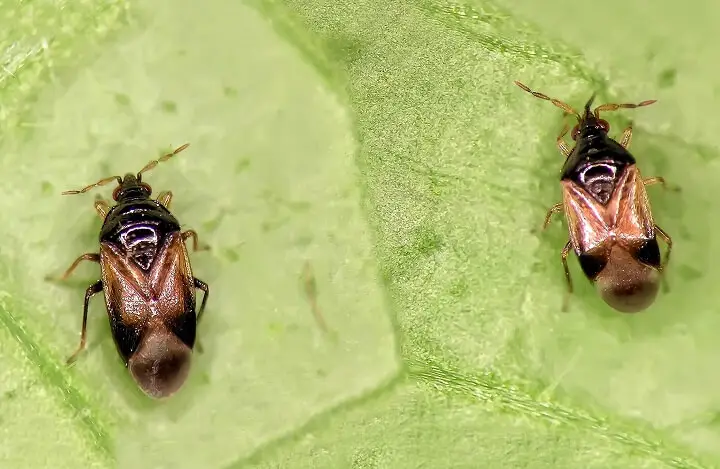
Homesteaders know that aphids and spider mites often cause a lot of damage in a garden. Pirate bugs are small predators of these insects and will show up on the farm during the summer.
You’ll note that they are tiny with a body only 2-3 millimeters long. Their bodies are oval-shaped and feature black-and-white markings on their wings.
The power of the pirate bug comes with their needle-sharp beaks. While they can pierce the body of insects, they also can penetrate the body of humans and become a nuisance.
Pirate bugs don’t suck blood or excrete venom, but they can suck enough juice out of their prey to kill it. So, while these tiny critters are great for the farm, they can become an issue if they grow out of proportion.
Ladybugs
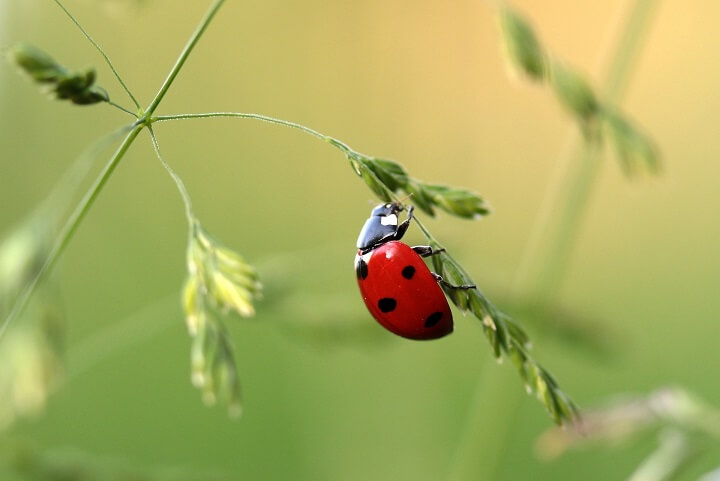
Many homesteaders know that ladybugs are a common insect that can significantly benefit the garden. In fact, you can even order a box of ladybugs to add to your homestead if your property is low on ladybug action.
These cute little bugs usually feature red wings with black spots on the back. Other color variations include a red beetle with no spots as well as an all-black beetle that is much smaller.
Ladybugs love to eat aphids, whiteflies, and colorado potato beetles that can cause significant damage to crops. However, the power of the ladybug lies in the larvae. The ladybugs lay their eggs and then the larvae are the real powerhouses in devouring damaging aphids.
Attract ladybugs to your garden by planting dandelion, dill, fennel, marigolds, and cosmos. If you do order ladybugs by mail, make sure to follow the package directions and only release them at night to a very damp garden.
Spiders
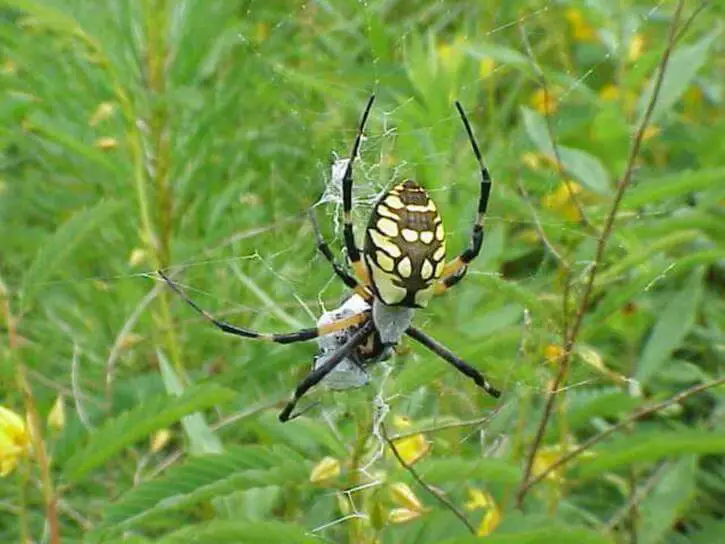
Oh, spiders. While they often look scary and some may have serious fears of these creatures, spiders have a rightful place on the homestead.
Spiders are vital to the health of the property as they eat a lot of annoying insects. Spiders aren’t picky about their meals and often help keep the fly and mosquito population down on the farm.
Sometimes an overpopulation of spiders can cause issues around the homestead. While a web here or there is useful, an influx of spiders can become a hazard. Again, spiders don’t care what they catch, so you could lose honeybees and butterflies to spiders if there are too many on the farm.
It is also good to know the dangerous spiders in your area that can cause harm with a single bite. Most garden spiders have brown or yellow markings. However, always be on the lookout for poisonous spiders while working outdoors.
Praying Mantis
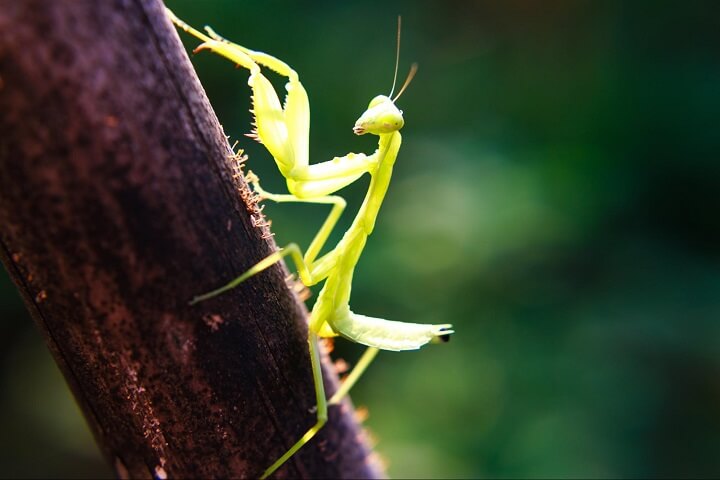
While this unique looking insect may take you by surprise, praying mantis’ are fantastic on the homestead. These hungry predators blend into the ground and plants that are often hard to spot. This camouflage allows them to sit and wait for their next meal.
They are quite fast and often kill predators that are three times their size. They feature sharp jaws and razor-sharp spikes on the underside of their front legs.
Praying mantises love to feed on grasshoppers, caterpillars, and mites, but also may eat beneficial insects like bumblebees. If you see a praying mantis in the garden, it is best to watch them from afar and leave them alone so you don’t get bit.
You can purchase a box of praying mantises if you’d like to add them to the homestead as well.
Ground Beetles
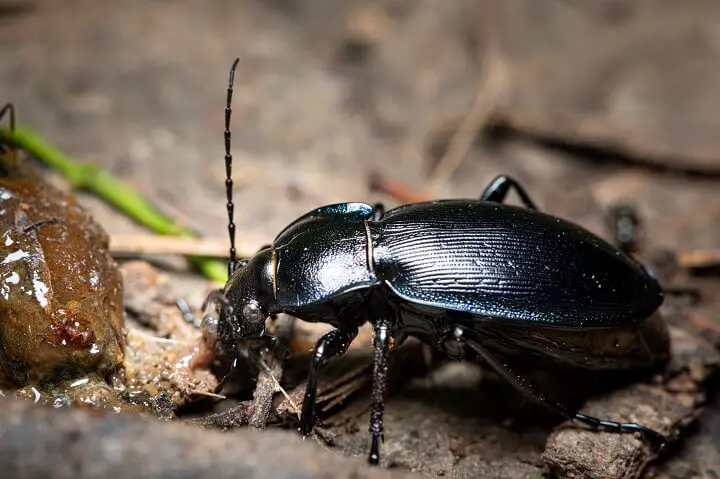
While there are many different kinds of beetles on the homestead, ground beetles are a good bug to have around. You’ll know them by their black bodies and indiscriminate beetle features.
They love to eat slugs, which can be very damaging in wetter climates. Cutworms, caterpillars, and colorado potato beetles are also on the menu for these everyday garden helpers.
Help attract ground beetles to the homestead by planting clover, evening primrose, and amaranthus. Consider using these plants around the home or outbuildings to help introduce them to the farm without needing to add these plants directly to your vegetable garden.
Green Lacewings
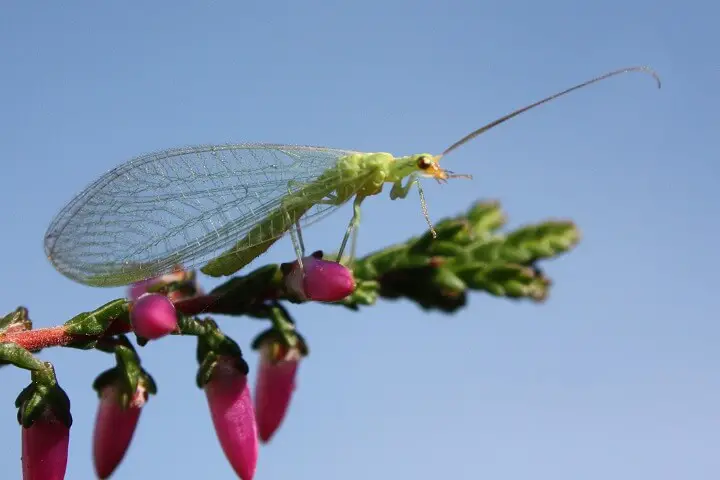
You’ve probably seen these little green flies around the garden. Green lacewing is a small insect that has a slender green body with long, almost transparent wings. They devour whiteflies and aphids that can often plague a homestead garden.
They also eat mealybugs that can cause a lot of harm as well. The larvae feed on soft-bodied pests like spider mites and leafhoppers.
Attract green lacewings to your homestead by planting coriander, dill, and golden marguerite. While you can spot these critters naturally in the garden, many homesteaders also purchase them to help kill off damaging insects. You can buy eggs or larvae lacewings and release them into your garden to improve pest management on the farm.
Final Thoughts
While any of these insects may seem bothersome while working on the homestead, they are often worth their weight in gold. Learning about these insects, and knowing what to plant to attract them to your part of the country, can increase the production of the homestead.
So, if you see these bugs in your garden, don’t kill them!
Like this post? Don't Forget to Pin It On Pinterest!

